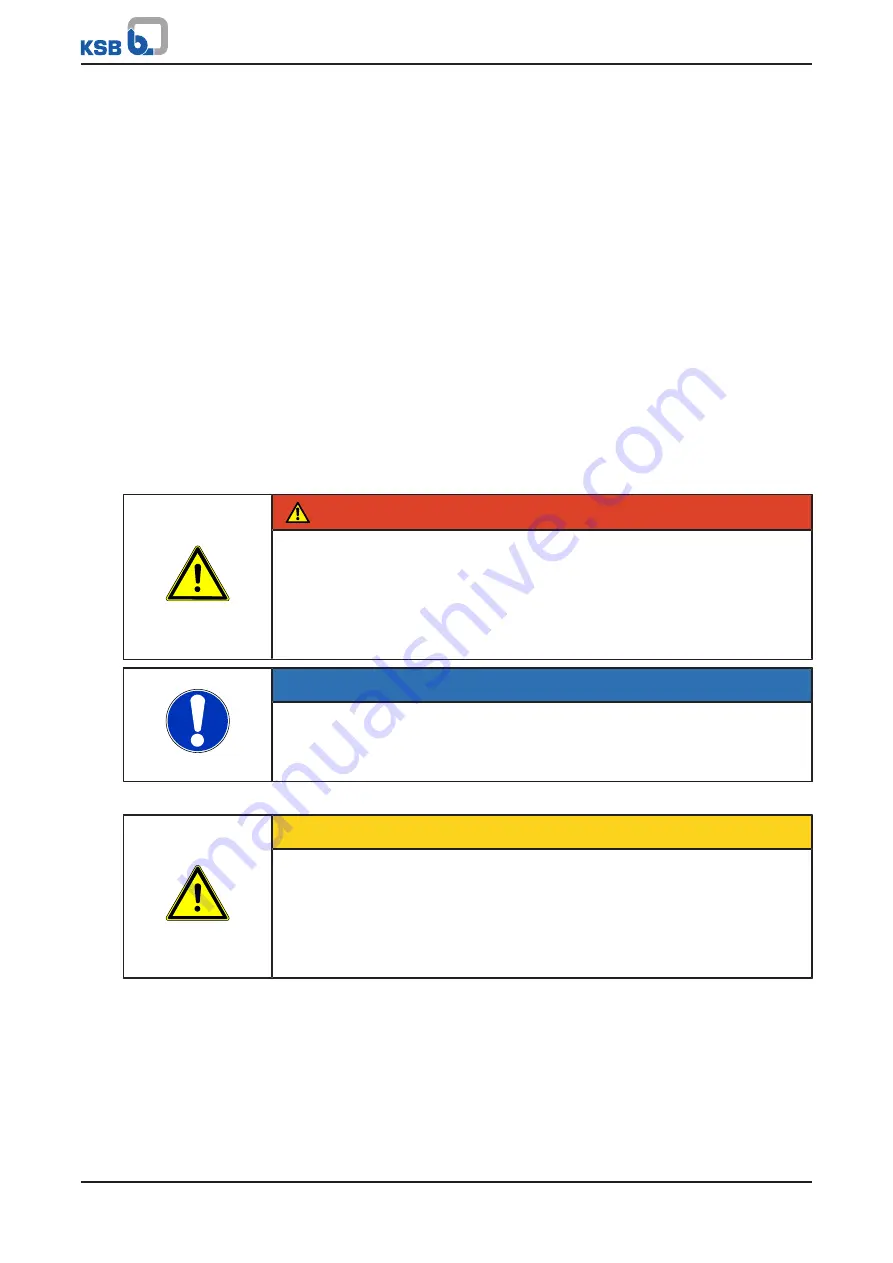
5 Installation at Site
41 of 116
CHTRa
Composition of the pickling solution for 100 litres:
▪
30 l of concentrated hydrochloric acid (37% concentration)
▪
70 l of water
▪
Temperature: Ambient temperature
1. Screw off the oil pipes and close one side.
2. Fill the pipes with the pickling solution and allow it to react until the inside pipe
surfaces are cleaned to bright metal, however 4 hours as a maximum.
After this procedure there must be no rust or scale particles left; remove
tenacious scale residues, if any, using a bottle brush.
3. Drain the pipes and flush them thoroughly with cold water.
4. Neutralise any possibly existing acid residues by filling the pipes with a soda
solution in a 0.5 % concentration.
5. After about 1 or 2 hours drain the pipes and flush them thoroughly with cold
water.
6. Immediately blow hot air through the pipes and dry them.
7. Immediately afterwards coat the pipes with the oil intended for this purpose,
for example by spray-coating, or filling and subsequent draining.
5.16.4 Fitting a strainer/filter (optional)
DANGER
Improper transport
Danger to life from falling parts!
▷
Observe the safety regulations for transport work. (
▷
Observe the applicable local occupational safety and accident prevention
regulations.
NOTE
The strainer in the inlet line is destined to stop welding beads, scale and other
impurities (that come off the piping with time) from entering the pump. It is not
destined to remove any inadmissible particles entrained in the fluid handled due to
an excessive solids content.
For installing the strainer refer to the manufacturer's product literature.
CAUTION
Improper transport of strainers/filters
Damage to the strainer/filter through lifting tackle!
▷
Do not exert pressure on the strainer element and strainer meshes or damage
them.
▷
Transport accessories by hand, if possible. If this is not an option because of the
weight, observe the transport options described in this manual.
1. Prior to installation, perform a visual inspection of the inlet pipe between
strainer and pump. Clean it, if required.
2. Install the strainer in the inlet line as close to the pump nozzle as possible.
3. For differential pressure monitoring a drilled hole is provided upstream and
downstream of the strainer insert or at the strainer housing.
















































